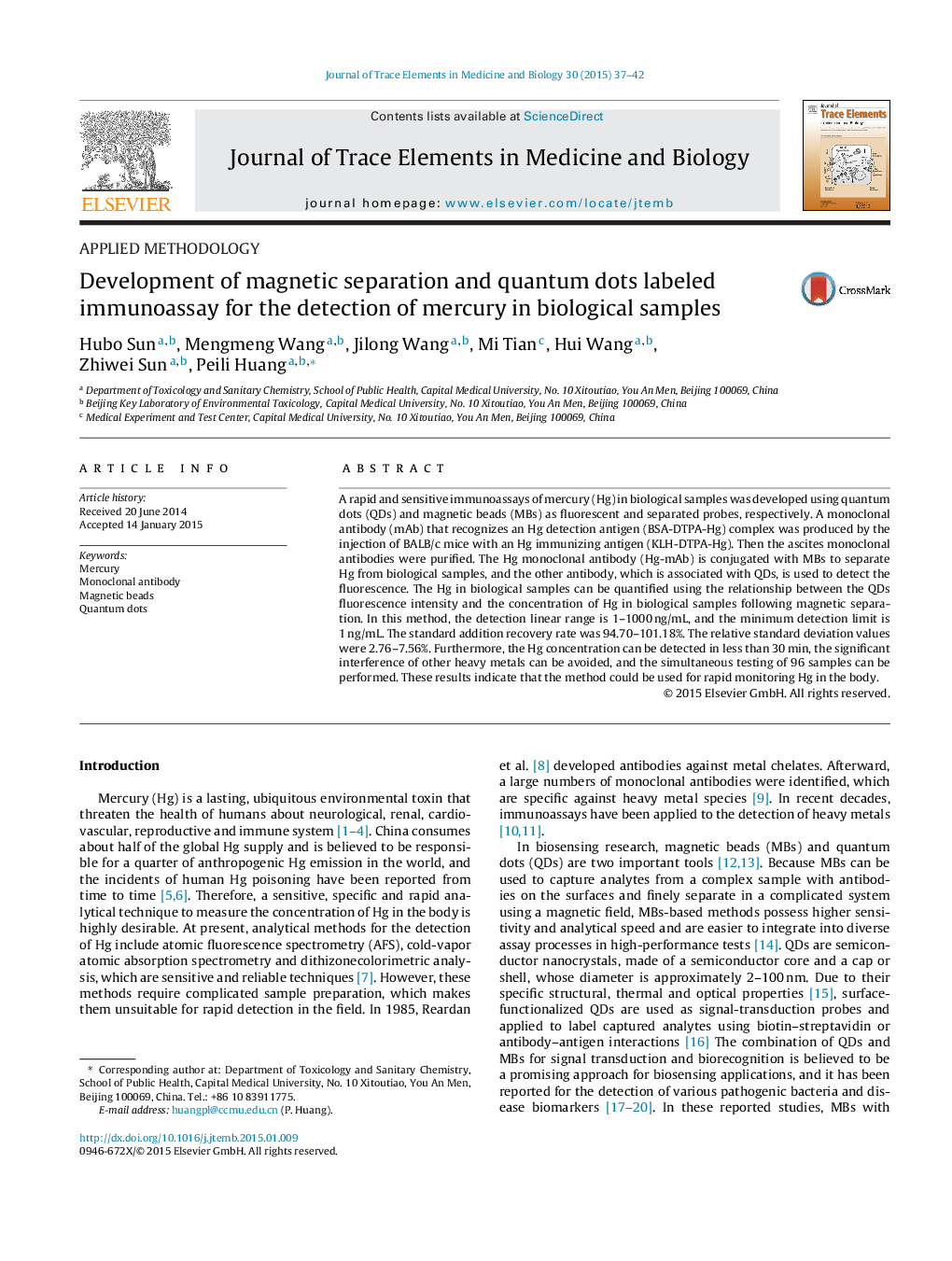| Article ID | Journal | Published Year | Pages | File Type |
|---|---|---|---|---|
| 1226347 | Journal of Trace Elements in Medicine and Biology | 2015 | 6 Pages |
A rapid and sensitive immunoassays of mercury (Hg) in biological samples was developed using quantum dots (QDs) and magnetic beads (MBs) as fluorescent and separated probes, respectively. A monoclonal antibody (mAb) that recognizes an Hg detection antigen (BSA-DTPA-Hg) complex was produced by the injection of BALB/c mice with an Hg immunizing antigen (KLH-DTPA-Hg). Then the ascites monoclonal antibodies were purified. The Hg monoclonal antibody (Hg-mAb) is conjugated with MBs to separate Hg from biological samples, and the other antibody, which is associated with QDs, is used to detect the fluorescence. The Hg in biological samples can be quantified using the relationship between the QDs fluorescence intensity and the concentration of Hg in biological samples following magnetic separation. In this method, the detection linear range is 1–1000 ng/mL, and the minimum detection limit is 1 ng/mL. The standard addition recovery rate was 94.70–101.18%. The relative standard deviation values were 2.76–7.56%. Furthermore, the Hg concentration can be detected in less than 30 min, the significant interference of other heavy metals can be avoided, and the simultaneous testing of 96 samples can be performed. These results indicate that the method could be used for rapid monitoring Hg in the body.
